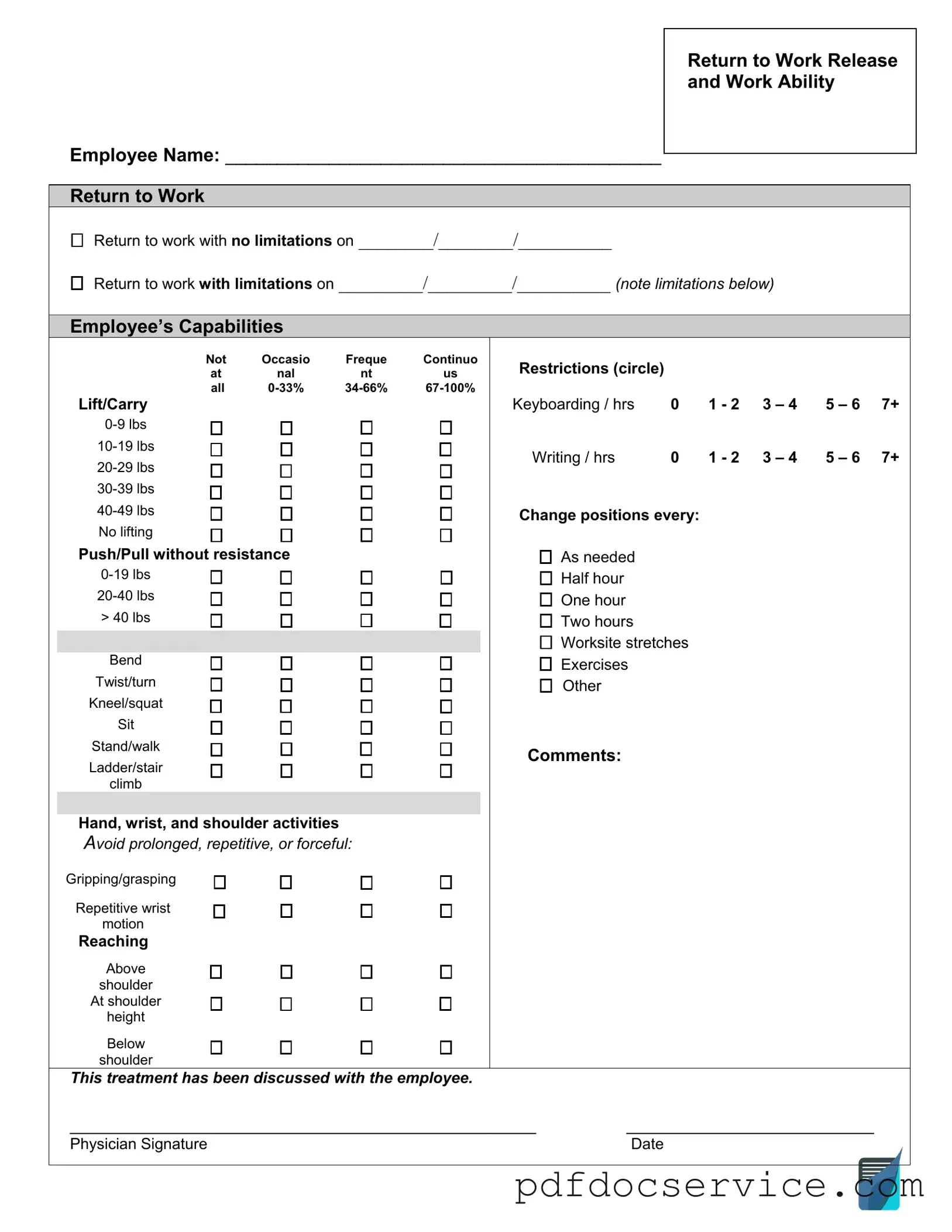The Work Release form is an essential document that plays a crucial role in various employment and legal contexts. It serves as a formal request for permission to leave a designated work environment, often used in situations where individuals need to attend to personal matters, such as medical appointments, family obligations, or educational pursuits. This form typically outlines the specific dates and times for the requested absence, ensuring that employers are informed and can make necessary arrangements to cover the employee's responsibilities. Additionally, it often requires the signature of both the employee and a supervisor, emphasizing the importance of communication and accountability in the workplace. Understanding the nuances of the Work Release form can help streamline processes and foster a supportive work culture, where employees feel empowered to manage their personal commitments while maintaining their professional obligations.
